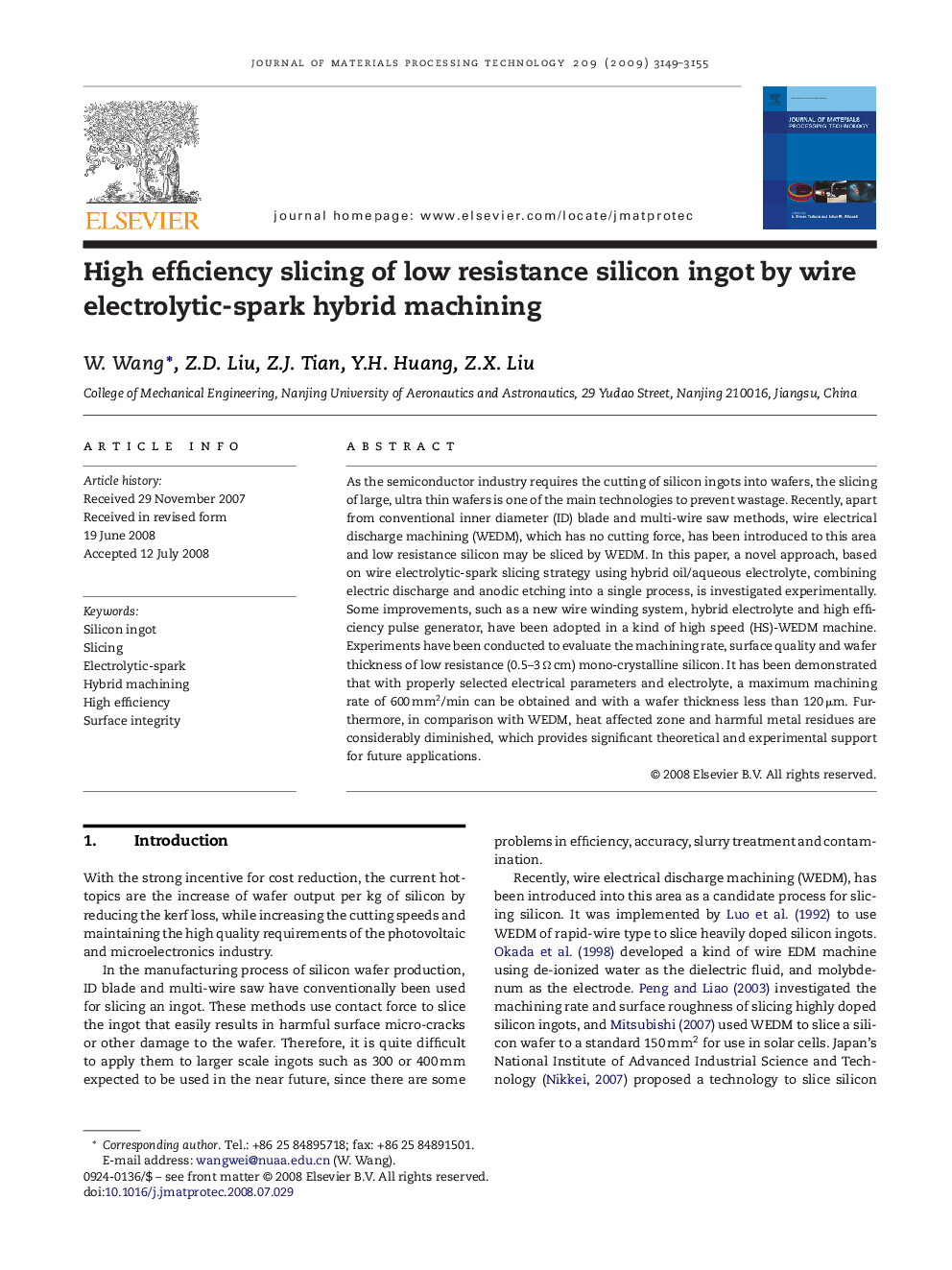| Article ID | Journal | Published Year | Pages | File Type |
|---|---|---|---|---|
| 791374 | Journal of Materials Processing Technology | 2009 | 7 Pages |
As the semiconductor industry requires the cutting of silicon ingots into wafers, the slicing of large, ultra thin wafers is one of the main technologies to prevent wastage. Recently, apart from conventional inner diameter (ID) blade and multi-wire saw methods, wire electrical discharge machining (WEDM), which has no cutting force, has been introduced to this area and low resistance silicon may be sliced by WEDM. In this paper, a novel approach, based on wire electrolytic-spark slicing strategy using hybrid oil/aqueous electrolyte, combining electric discharge and anodic etching into a single process, is investigated experimentally. Some improvements, such as a new wire winding system, hybrid electrolyte and high efficiency pulse generator, have been adopted in a kind of high speed (HS)-WEDM machine. Experiments have been conducted to evaluate the machining rate, surface quality and wafer thickness of low resistance (0.5–3 Ω cm) mono-crystalline silicon. It has been demonstrated that with properly selected electrical parameters and electrolyte, a maximum machining rate of 600 mm2/min can be obtained and with a wafer thickness less than 120 μm. Furthermore, in comparison with WEDM, heat affected zone and harmful metal residues are considerably diminished, which provides significant theoretical and experimental support for future applications.
